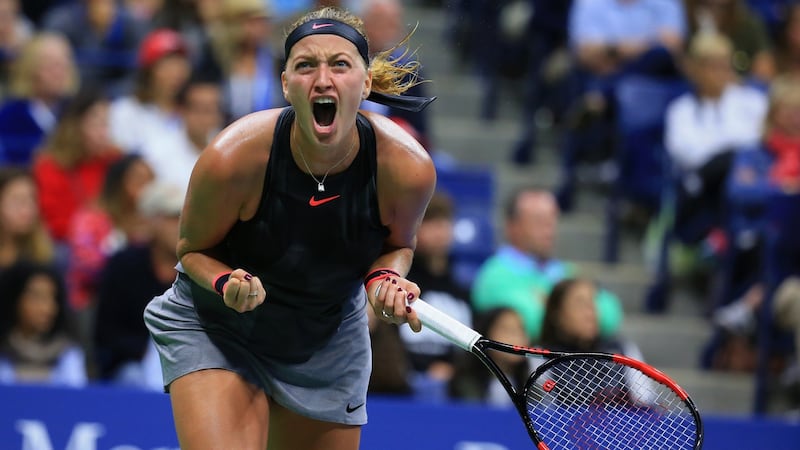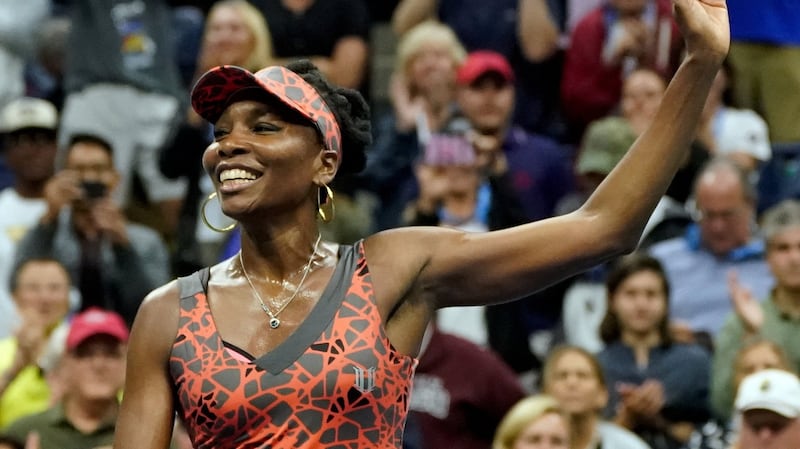For four matches in a row at this US Open a player ranked 146 in the world has appeared exclusively on the main court, Arthur Ashe, while lamely protesting she would have happily played in the car park. Ultimately Maria Sharapova – for it is she – could not deliver on the faith of American television and the compliance of the organisers, succumbing to the magic of Anastasija Sevastova who chipped, lobbed and sliced her way – sometimes switching hands – to an impressive win in three sets.
It was no upset. Although her 16th seeding is a fair reflection of her stature, even in a devalued field, she has always been dangerous. She was well worth her 5-7, 6-4, 6-2 win in two and a quarter hours in front of an audience still entranced by the comeback of her opponent.
Last year at the same stage of the tournament, the engaging 27-year-old Latvian – for whom tennis is a joy not a business – upset Johanna Konta. She went out meekly to Caroline Wozniacki in the quarter finals winning only two games, but she left the impression that her talent should not be ignored. Earlier in the draw she beat the world No3 Garbiñe Muguruza, who arrived in New York this year as favourite after her breakthrough win at Wimbledon.
She said courtside, “Playing on Ashe is amazing. It makes it fun to play here. The first set could have gone either way. I just kept fighting, running down every ball.” Next up for her is the unseeded American Sloane Stephens, who continued her remarkable summer comeback on hard courts by beating the German 30th seed, Julia Görges, 6-3, 3-6, 6-1 on Armstrong.
Sevastova comes from Liepaja, the third largest city in Latvia, and her coach, Ronald Schmidt, cut a lonely figure in her box, but proudly wearing a cap that told of his admiration for her home town. She is a player without artifice or frills but has a keen tennis brain.
Sharapova had Sevastova's measure in the first set and looked as if she would carry on where she had left off against the young American Sofia Kenin in the third round, whom she beat in two sets after three-set struggles against the world No2, Simona Halep, and the unseeded Hungarian, Timea Babos.
Tired racket
However, the six hours and 44 minutes she clocked up winning those matches seemed to have sapped a little zip from her legs and the unforced errors mounted on her tired racket in the second set.
Sevastova saved all three break points against her in that set as a dogged battle of wills developed with the Russian, one of the great fighters and screamers.
The last point of the seventh game of the set was one to savour: twice Sevastova switched the racket to her left hand to lob the incoming Sharapova; twice the Russian sped to retrieve it and was relieved to see her opponent’s last party piece, a right-handed drop shot, hit the wrong side of the net.
Trailing 3-4, she got a break point but could not convert – weirdly eschewing a challenge that would have won her an Ad point, and the Latvian was worth her 5-3 lead after a lot of artful tennis.
She clinched the set when Sharapova overcooked her return – and immediately left the court. She did this when playing Halep in the first round, returning to grind out her seventh win over the Romanian. Would the same trick work against Sevastova?
Two double faults and a dropped serve on resumption suggested not. Time – of which she has had plenty away from the game during her 15-month suspension – was catching up on her. She wore a small bandage on her serving hand, too, which might have been there to cover a blister.
Meanwhile, Sevastova continued to produce the loveliest of drop shots, floating with uncanny accuracy just far enough to tease a stutter out of Sharapova – who, trailing 0-2, tried it herself in the third game and gave up three break points. A weary backhand gave Sevastova the game and encouragement to believe this match was hers to lose.
The trainer emerged to attend to Sharapova’s hand; unfortunately, she did not have Sevastova’s option of switching to her left. There was the tiniest bubble visible near her little finger and the spectacle resembled someone having a manicure. After the needlessly long medical timeout, Sevastova looked to have lost focus and had a minor meltdown, two double faults gifting Sharapova the fourth game and a lifeline. Tension returned to the contest.

No doubt the majority view was that Sharapova's continued presence in the draw would lend quality and drama in the absence of her long-time tormentor, Serena Williams – although Wozniacki voiced the alternative view when she complained about her being given the big stage in every match. That drew the "car park" response from Sharapova and, at times here, she played as if she had the limo revving up outside and ready to go.
But she is above all a competitor – whatever cocktail dress she is wearing. She served big to drag the score back to 2-3, and Sevastova needed to rediscover her earlier composure to stay in front. Sharapova had more tape applied to her second finger but this time the on-court pause did not disrupt her opponent’s rhythm and she held to love to move within two games of the quarters for the second year in a row. At the end Sharapova’s serve dipped below 100 miles an hour, which Sevastova marmalised. And, with a little stutter at the end, she converted the fourth of her match points, bringing to an end one of the longest theatrical runs in town but one that maybe should have spent some time off Broadway.
In the evening, Garbine Muguruza, who has nearly as much hauteur as Sharapova but not quite the fighting instincts, was brought crashing down from her perch as favourite for the title when Petra Kvitova produced the sort of tennis that lifted the former Wimbledon champion to the summit of the game.
It wasn’t a perfect win by Kvitova – although she is yet to drop a set – but she showed a lot of her old fight, power and determination.
“I tried to relax, but it was great to play here again,” she said on court afterwards. “It means a lot. It is incredible to play again in front of a great crowd.”
She brought her night’s tally of double faults to nine with two in a row before saving three break points to close it out 7-6, 6-3 after an hour and 45 minutes.
Muguruza, the third seed, led 4-1 in the first set before losing her way; her last contribution was an overcooked forehand after wrong-footing her opponent. The Spaniard’s departure opens up the draw for several candidates in the final eight.

The Czech left-hander has never got past the quarter-finals here in 10 visits; in 2015, she lost to the eventual champion Flavia Pennetta in three sets; last year Kerber beat her in the fourth round before going on to win the title. Pennetta has retired; Kerber went out in the first round – but Kvitova has returned from an horrific knife attack in her Czech apartment before Christmas to be in with a shout of winning the US Open.
“[BEING] out for five months was very tough,” she said. “I didn’t know how the journey would end. Every moment is very special.”
If she plays like this against Venus Williams in the quarters, she might yet be the new favourite. Even Williams appears to be willing her on: “What she’s gone through is unimaginable, unreasonable,” said the American. “The world we live in is just shocking. So for her, I think to be playing well is such a blessing. To be able to come out here and do what she needs to do, to clear her head, it’s such a beautiful thing to see.”
(Guardian service)











